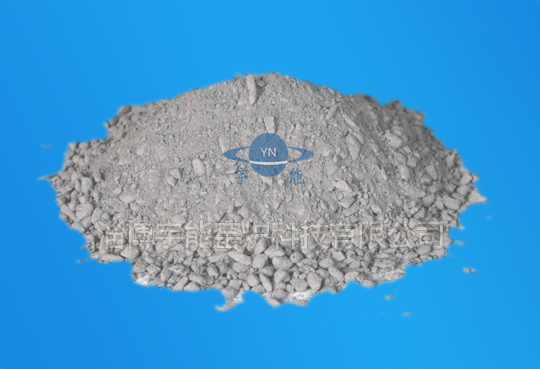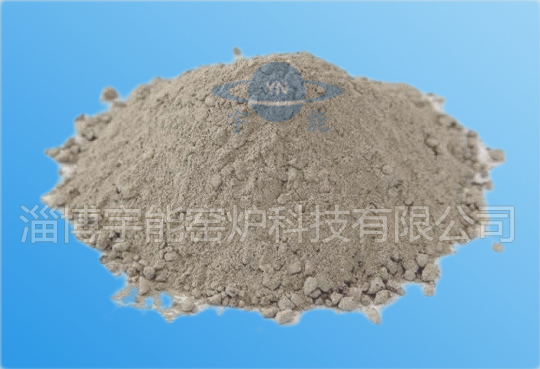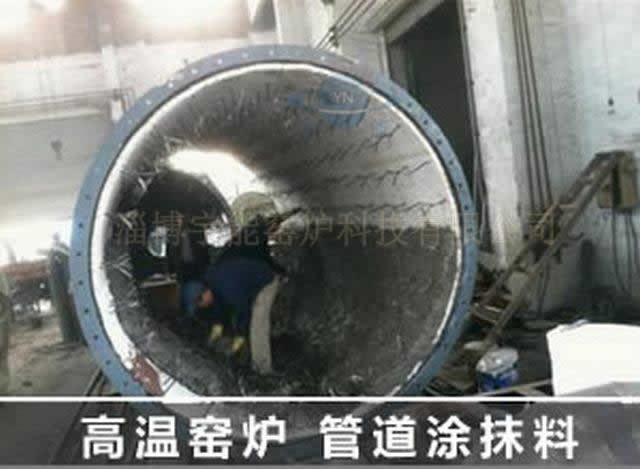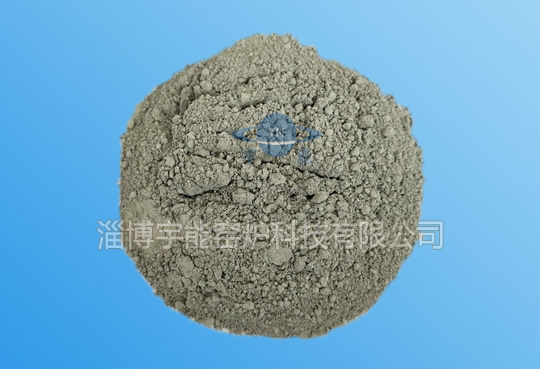Zibo Yunneng Kiln Technology Co. Ltd. Zibo Yunneng Kiln Technology Co. Ltd.
Free delivery samples
high quality assurance
Engineer's door-to-door guidance
lifelong technical support
Contact us+86159669653330086-533-5331887
Zibo Yunneng Kiln Technology Co. Ltd. Zibo Yunneng Kiln Technology Co. Ltd.
Free delivery samples
high quality assurance
Engineer's door-to-door guidance
lifelong technical support
Contact us+86159669653330086-533-5331887
Home -> News -> News -> Industry News ->

One. Foreword
Nowadays, in the rolling steel smelting furnace, slag intrusion is a serious matter when the slag is directly contacted and the slag is worn and washed (such as the bottom of the furnace, the furnace, the tapping tank, the slag-resistant wall, etc.). Once the slag corrodes the refractory material in the part, it not only shortens the age of the refractory, but also causes great problems for the slag, which increases the labor intensity of the mechanic and indirectly affects the financial benefits.
In order to solve the problem of slag intrusion, we reviewed a lot of information and dissected and discussed the chemical composition and corrosion mechanism of the slag. Based on the results of the discussion, we carried out relevant laboratory work and discussed the high-quality RSK anti-slag castables for slag-resistant functions.
two. Important chemical composition and corrosion mechanism of slag
(1) Slag chemical composition
The chemical composition of the rolling blast furnace slag has a wide range of fluctuations. The representative components are listed in the following table:
Chemical composition FeO CaO Al2O3 SiO2 MgO melting temperature
Content (wt %) 50.4 7.42 6.48 34.64 1.06 1280°C
(2) Corrosion mechanism
After repeated observations on the corrosion condition of the rolling mill, we feel that the slag has important reasons for the corrosion of refractory materials:
Capillary infiltration
In many different situations, we can roughly think that the higher the porosity of the refractory material, the higher the probability of capillary infiltration, that is, the higher the probability that the pores are covered by the liquid phase of the slag, once the pores are slag Coverage will also lead to the development of slag immersion.
2. Chemical damage
The chemical damage of refractory materials, that is, chemical corrosion, can be regarded as the solid state melting in the fluid. That is to say, when the refractory material and the slag are lining, the components engraved with each other are not renewed, the object has not migrated, and the refractory material is formed, and the high temperature of the refractory material is reduced. In the rolling steel smelting furnace, the high-iron slag is corroded to the inside of the refractory material, thereby forming a modified layer, causing significant cracking of the refractory material, and the refractory material is peeled off and damaged.
From the above dissection, it can be found that the direct contact with the refractory material in the slag part is mainly caused by the chemical corrosion of the slag and the structural detachment of the slag into the refractory. Therefore, in order to saturate the slag in the refractory material, the following two methods can be adopted:
(1) making the refractory structure dense;
(2) The dampness of the slag to the refractory material.
Third, the development of anti-slag castables
(1) The premise of rolling steel smelting furnace and the functional requirements against slag casting
The ambient temperature of the rolling mill is generally up to 1300 °C, the atmosphere is weakly reducing, and the slag is molten static at 1300 °C, and the slag is more corrosive to the refractory.
Therefore, in addition to the high intensity of the slag castable in addition to the slag castable, it must be sufficient to meet the requirements:
1. High temperature mechanical function is good, with high quality high temperature wear resistance and resistance to slag scouring;
2. Resistance to slag chemical corrosion and penetration resistance;
3. Higher replenishment density and volume stability, compact porosity, and dense structure;
At the same time weigh the construction and application requirements, the anti-slag castable must also meet the following premise: good construction performance, rapid construction; better baking function, can be quickly baked without bursting; strong non-stick slag, Easy to disintegrate and make up.
Fourth, the development of anti-slag castables
1. The important raw material functions are shown in Table 1.
Table 1 Chemical synthesis of important raw materials (wt%)
Name Al2O3 SiO2 Fe2O3 R2O CaO Other
Refractory aggregate and powder >85 - ≤2.0 ≤0.4 ≤0.6 refractoriness ≥1790°C
Conjunction ≥80 ≤0.1 ≤0.2 - <18
2. The important ratio is shown in Table 2.
Table 2 Important ratio of slag-casting castables (wt%)
No. Refractory aggregate Refractory powder Anti-slag agent Conjuncting agent
1 70 6 A 5
2 70 7 B 5
3 70 14 C 6
4 70 15 D 6
3. Sample preparation and physical and chemical function test:
Pre-mix the weighed raw materials for 1min, add raw water, mix for 4~5min, and then pour to 100× 100× 100mm square touch and 40× 40× 160mm scale touch, sensation molding, at the same time, in the square Huazhong reserved a Φ 25mm, 50mm deep round hole.
After the sample is dried at 110 ° C & times; 24 h, 50 g of slag (slag particle size & 10 mm) is placed in the reserved hole of the square sample, and placed in an electric furnace together with the scale sample to be baked at 1450 ° C for 3 hours. After the sample is cooled to room temperature with the furnace, the sample is taken out to carry out various functional tests. Its physical and chemical functions are shown in Table 3.
Table 3 Physical and chemical properties of the sample
No. Weight (t/m3) Chemical composition (wt%) Afterburning resistance (MPa) Compressive intensity after burning (%) 110°C× 24h Al2O3 Aggregate 110°C× 24h 1450°C× 3h 1450°C× 3h
1 2.53 ≥66 high alumina 3.09 9.30 +0.80
2 2.45 ≥68 high alumina 3.10 9.15 +0.68
3 2.65 ≥ 77 high aluminum 2.25 11.45 +0.12
4 2.60 ≥78 high alumina 2.30 11.20 +0.34
4. Anti-slag observation
After observing the condition of the outer surface of the sample, it was found that the surface layer of the sample was first formed into a better protective layer, and the burnt sample was cut along the central axis to observe the slag intrusion condition and the corrosion layer was thick. The degree is as follows: (1)<(2)<(3)<(4), the second group is more serious than the first group, and the fourth group is more serious than the group; the slag is easy to leak with the slag It can be seen that the refractory material has small viscosity to the slag.
four. Conclusion
1. Among the above ingredients, a special anti-slag component is selected, which increases the temperature of the material and the slag, reduces the melting degree of the material in the slag, and mobilizes the slag resistance of the material;
2. The above materials are well-formed, so the porosity is low, and the infiltration of the slag is weak;
3. The non-stick slag property of the above materials is conducive to the removal of slag.
Fives. RSK anti-slag castable example and application prospects
Nowadays, RSK anti-slag material has been applied to the furnace of the Shougang Group Baosteel Strip Co., Ltd., the steel-type blast furnace furnace, and the Shougang Group micro-factory rolling furnace. The two units used the RSK anti-slag material before the furnace slag The eclipse is severe, not only the furnace is used for a relatively short age, but also because the slag of the materials used in the past is large, it causes a very big problem for the slag, and at the same time increases the labor intensity of the mechanic. The above conditions are greatly improved after using the RSK anti-slag castable.
Relevant Product Display
 Refractory for ladle, heat preservation furnace, etc
Refractory for ladle, heat preservation furnace, etc
 DL Series of light insulation refractory castable
DL Series of light insulation refractory castable
 Super light insulation coating for high temperature kilns and pipes
Super light insulation coating for high temperature kilns and pipes
 New low expansion castable AS-A
New low expansion castable AS-A
Relevant information
Hotline